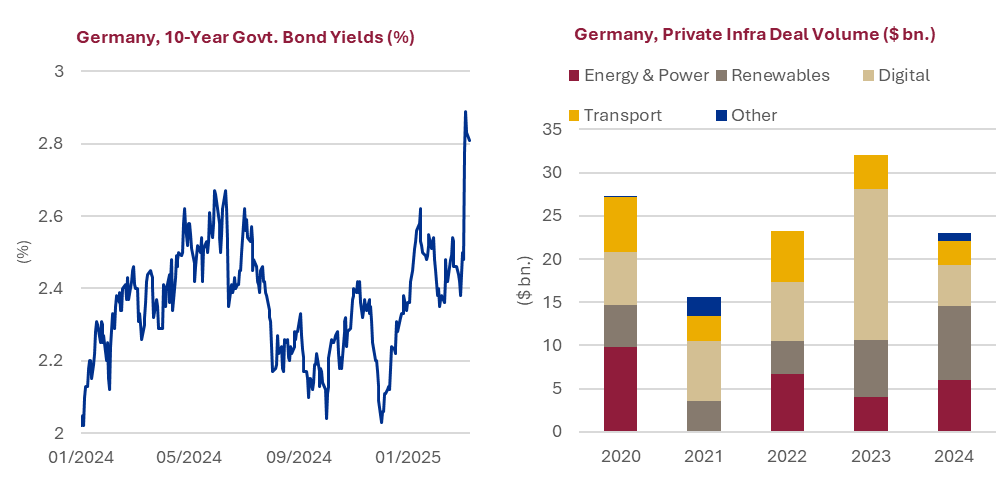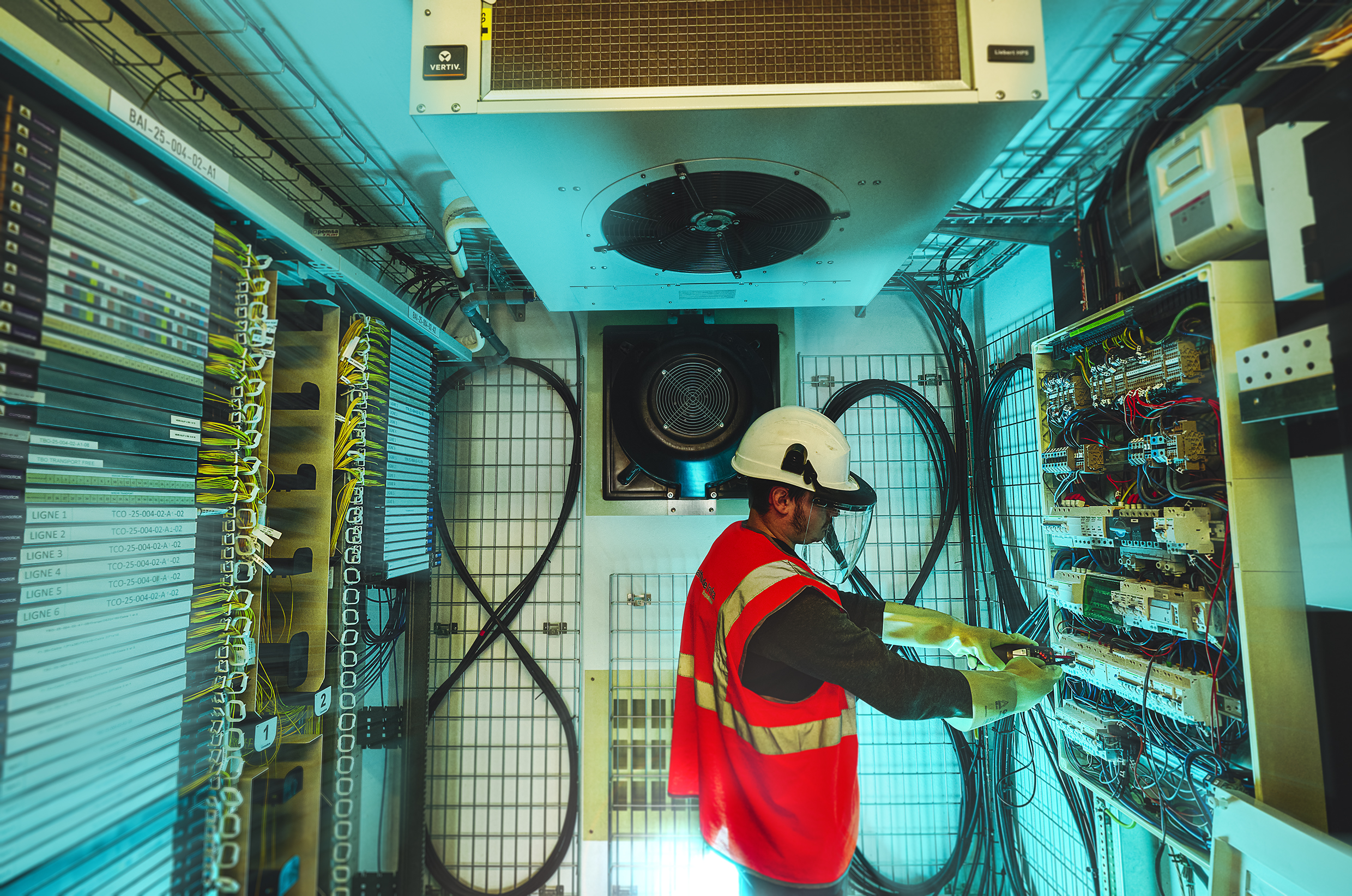[1] Bloomberg, “Germany Loosens Fiscal Chains to Transform European Economy”, 5 March 2025
[2] Financial Times, “Germany’s Green viw to block Friedrich Merz’s flagship spending package”, 10 March 2025
[3] Macrobond, 10 March, 2025
[4] Reuters, “Germany’s defence spending boom ‘positive’ for triple-A rating, S&P Global says, 5 March, 2025
[5] Infralogic database, includes M&A and greenfield transactions reaching financial close, as at 11 March 2024
[6] Sueddeutsche Zeitung, “Sondervermögen für Infrastruktur”, 10 March, 2025
InfraRed has based this document on information obtained from sources it believes to be reliable, but which have not been independently verified. All charts and graphs are from publicly available sources or proprietary data. Except in the case of fraudulent misrepresentation, InfraRed makes no representation or warranty (express or implied) of any nature or accepts any responsibility or liability of any kind for the accuracy or sufficiency of any information, statement, assumption or projection in this document, or for any loss or damage (whether direct, indirect, consequential or other) arising out of reliance upon this document. InfraRed is under no obligation to keep current the information contained in this document.
You are solely responsible for making your own independent appraisal of and investigations into the products, investments and transactions referred to in this document and you should not rely on any information in this document as constituting investment advice. This document is not intended to provide and should not be relied upon for tax, legal or accounting advice, investment recommendations or other evaluation. Prospective investors should consult their tax, legal, accounting or other advisors. Prospective investors should not rely upon this document in making any investment decision.
Investments can fluctuate in value, and value and income may fall against an investor’s interests. The levels and bases of taxation can change. Changes in rates of exchange and rates of interest may have an adverse effect on the value or income of the investment or any potential returns. Figures included in this document may relate to past performance. Past performance refers to the past is not a reliable indicator of future results. There can be no assurance that the opportunity will achieve its target returns or that investors will receive a return from their capital. Investment in the products or investments referred to in this document entails a high degree of risk and is suitable only for sophisticated investors who fully understand and are capable of bearing the risks of such an investment, including the risk of total loss of capital originally invested. It may also be difficult to obtain reliable information about the value of these investments, which will often have an inherent lack of liquidity and will not be readily realisable.
This document is being issued for the purposes of providing general information about InfraRed’s services and/or specific assets and their operational performance only and does not relate to the marketing of investments in any alternative investment fund managed by InfraRed.
InfraRed may offer co-investment opportunities to limited partners, or third parties. These circumstances represent conflicts of interests. InfraRed have internal arrangements designed to identify and to manage potential conflicts of interest.
This document should be distributed and read in its entirety. This document remains the property of InfraRed and on request must be returned and any copies destroyed. Distribution of this document or information in this document, to any person other than an original recipient (or to such recipient’s advisors) is prohibited. Reproduction of this document, in whole or in part, or disclosure of any of its contents, without prior consent of InfraRed or an associate, is prohibited.
This document is not intended for distribution to, or use by, any person or entity in any jurisdiction or country where such distribution or use would be contrary to law or regulation.
InfraRed Capital Partners is a part of SLC Management which is the institutional alternatives and traditional asset management business of Sun Life.




